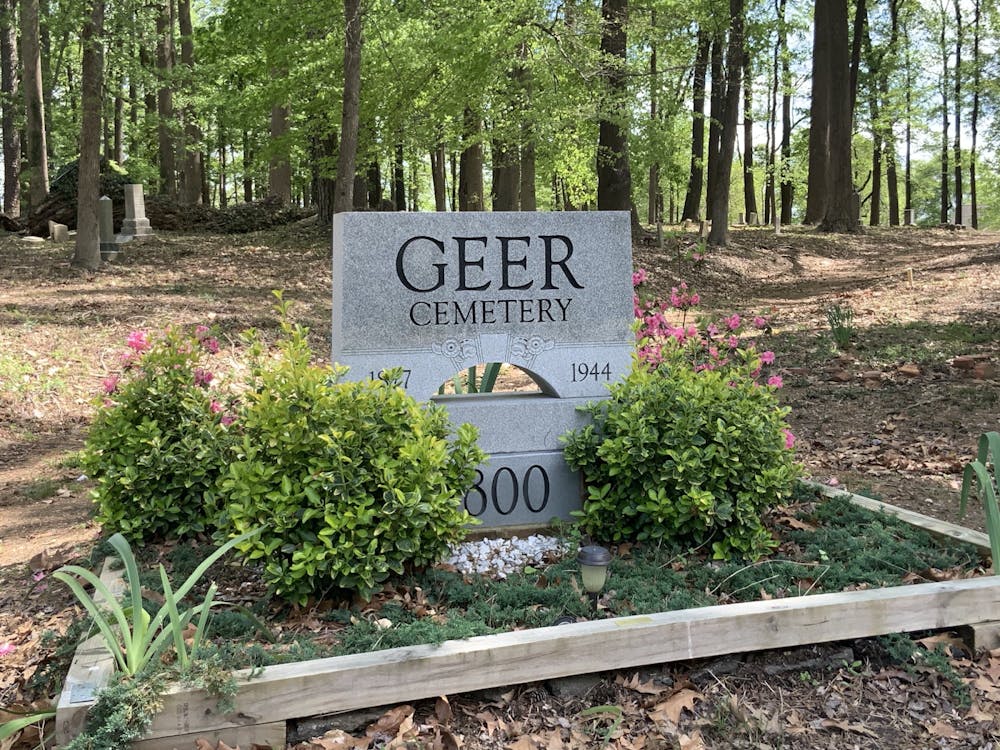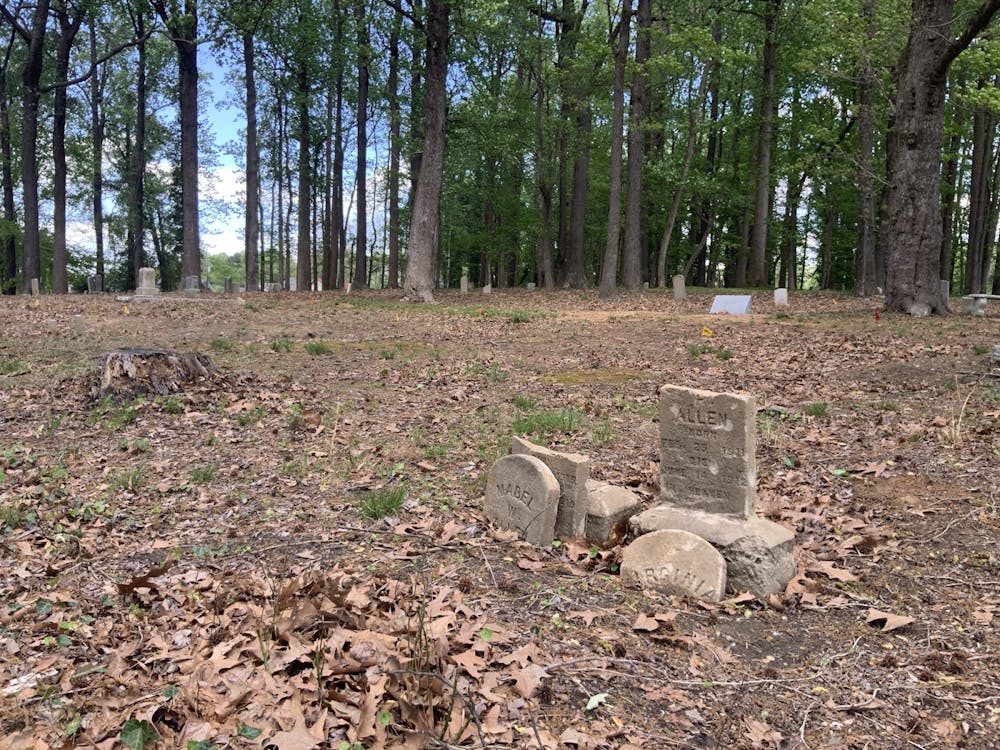For some Duke students, leaving campus entails only of venturing to cafes on Ninth Street and exploring Main Street’s offerings downtown. Oftentimes students fall into the Duke bubble and do not seek out the opportunity to engage with Durham’s rich history. A few students this semester got the chance to change that—at least for themselves.

Photo courtesy Adam Rosenblatt.
Geer Cemetery, located just three miles from Duke’s East Campus, was established in the 1870’s to lay more than 1,500 African Americans to rest. Of those buried there, some lived enslaved lives, others worked segregated jobs during the Jim Crow era and some came to found historic churches and universities.
As time went on, however, the area fell victim to a lack of upkeep and accountability by the city. Headstones have fallen over and broken apart, markers are misplaced and ivy covers much of the land, making it barely recognizable as a cemetery. The Friends of Geer Cemetery, an organization that is dedicated to the burial ground’s restoration, has been working to undo the neglect the area has succumbed to.
There are significant links between Geer Cemetery and Duke University. James W. Loy was a janitor at Trinity College for seven years and was well-liked among students and officers. Aaron Turner was also a janitor and gardener and performed many odd tasks for white people in the city of Durham. Mary Sparkman was a cook for Benjamin Newton and Sarah Duke. Her tombstone is inscribed with the epitaph, “Mary Sparkman By Mr. and Mrs. B.N. Duke, Whom She Served Faithfully.” Unfortunately, most of the information recorded on those above speaks to who they were in reference to the university and white power structure, not their relations to other friends, family or community members. Considering Duke’s deep connections to Geer Cemetery, we believe that the university should take more steps at supporting the restoration of Geer Cemetery, a piece of Durham’s history with descendants and a wider community, now including us, who cares about it. We recommend that Duke begin to facilitate more student engagement by providing more funding to service learning courses that engage with Durham in a variety of ways, and more intentionally encouraging students to take them.
Despite Geer’s proximity and ties to Duke, many students are unaware of its existence and much of the history that shaped its present state. Although constant Ninth Street ventures are tempting, there is so much more to Durham and to Duke’s history that can help us to better understand and engage with parts of the community that have long suffered from structural violence and neglect. Especially at a time like this, as we witness marginalized populations suffering the most in times of crisis, we need to take action in our own community in a more informed way.
Our class, ICS 283: “Death, Burial, and Justice in the Americas,” is a service learning course partnered with the Friends of Geer Cemetery organization to research the lives of people buried at Geer and engage with Durham in a historically informed and reflective way. The work has taken us through troves of Ancestry.com records, newspaper articles and Durham city materials to piece together stories of a forgotten and dignified Durham--as UNC History Professor William Sturkey writes, the “actual people who built our society.”
Outside of the classroom, we got to know the cemetery and spent work days at Geer clearing branches and weeds. One work day, the headstone of Susan Richardson was uncovered and washed clean, after years of being hidden towards the back of the cemetery under layers of dirt and overgrowth, in the shadow of a downed tree.

Photo courtesy Adam Rosenblatt.
Seeing the damage firsthand allowed us to gain a deeper understanding of the racism and neglect that led to Geer’s present state, a lesson that every Duke community member should absorb. Every time we found a new piece for someone’s story; whether it was the uncovering of photographs, city directory documents, or high school yearbooks, we realized we were playing an impactful role in telling the stories of those who have been forgotten by history. There is a beauty in the power of someone’s voice and ability to make lost stories found, well and alive. This has been an opportunity for Duke students to thoughtfully engage in the history of Durham by collaborating with members of the community on a restorative project.
We realize there is no such thing as true repair in this relationship, and that we cannot undo the pain or centuries of racism that allowed the conditions at Geer to develop. However, we can make a better effort in remembering those that are buried at Geer, and giving them back some of the humanity that was stolen from them.

Photo courtesy Adam Rosenblatt.
The culmination of the ICS 283 class’s research and partnership with Friends of Geer for this semester is taking place as a Zoom video conference entitled Histories of Dignity: A collaboration between Duke undergraduate researchers and the Friends of Geer Cemetery on April 16, 2020 at 5:30 p.m. The conference will include an introduction to Geer, some creative works, and a reading of the life stories, as well as a Q&A session and is open to absolutely everyone!
Molly Mendoza is a Trinity junior and Ruth Fetaw is a Trinity sophomore.
Get The Chronicle straight to your inbox
Sign up for our weekly newsletter. Cancel at any time.
